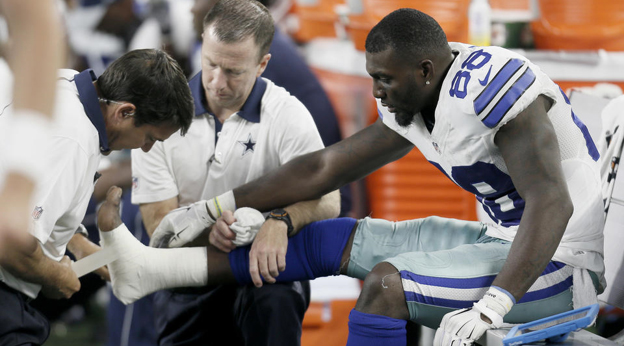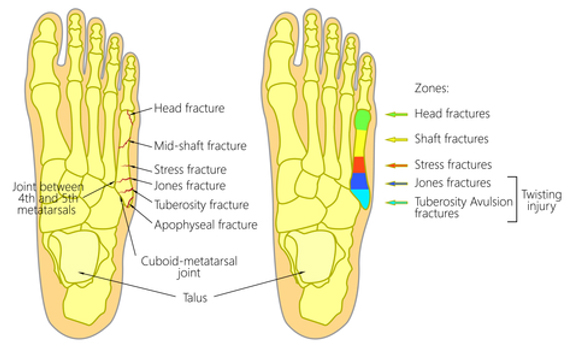The next piece in our series on foot injuries in football is regarding the Jones Fracture, otherwise known as a fracture of the proximal portion of the 5th metatarsal. Unlike the Lisfranc fracture, which we previously discussed, the Jones Fracture is far more prevalent amongst skill position players; particularly wide receivers and running backs who have to make frequent sharp cuts and pivots while running at high speeds. These movements create sharp changes in direction, which will cause the player’s weight and center of gravity to shift, and can sometimes create stresses over joints that aren’t normally built for that purpose. In the foot, this can occur at the 5th metatarsal or the portion of the foot between the pinky toe and bottom of the ankle / heel. The forces generated during sharp cuts and turns can be enough to cause a spontaneous fracture in the shaft of the 5th met, without any additional outside forces. Notable instances of this fracture in recent years include Julian Edelman, Julio Jones, and Dez Bryant; all explosive, quick wide receivers who rely upon powerful and violent cuts to generate separation from opposing defenders.

In many cases, due to a poor blood supply to the area, surgical fixation is generally required to achieve healing of this fracture. In some cases, (when the fractured portion remains in good alignment with the remainder of the shaft) the fracture can be treated in a conservative manner with hard casting and at least 8 weeks of non-weightbearing. However, these fractures have a high risk of nonunion and re-injury, typically causing most surgeons to lean towards surgical fixation.

With surgical fixation, the most common approach is to insert an intermedullary screw to stabilize the fracture. Following surgery, patients are typically kept non-weightbearing with a cast for 2-4 weeks afterwards, depending on surgeon preference. From there, patients are progressed to a walking boot and begin skilled rehab. Initial rehab will focus on edema management and restoration of range of motion in the ankle and foot. It is also possible at this point in the rehab process to initiate aquatic therapy, which is a feature Furnace brook PT has on-site. Another tool that can be used at this time, and is also available in the clinic, is Blood Flow Restriction Training. Both aquatic therapy and BFR are useful in these cases to accelerate the rehab process while minimizing impact and protecting the still healing bone. As the patient progresses, intrinsic foot strengthening and extrinsic ankle strengthening is incorporated, and then functional strengthening and balance are added. If the patient successfully meets strength, ROM, swelling, and pain benchmarks, return to sports related activity can begin at the 3 month post-operative mark. If serious complications are avoided, patients can expect to fully return to prior pre-operative functional and recreational activity level.
